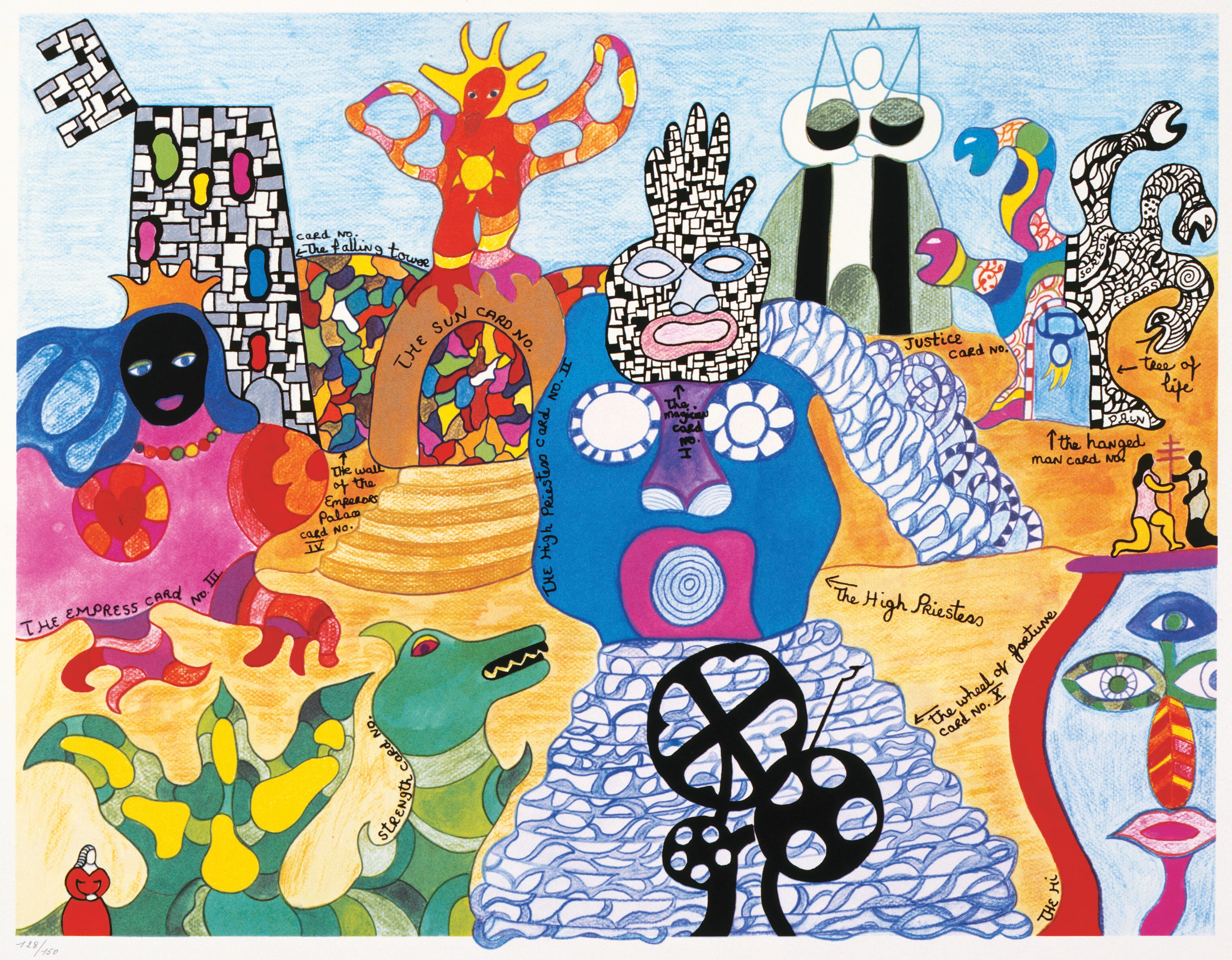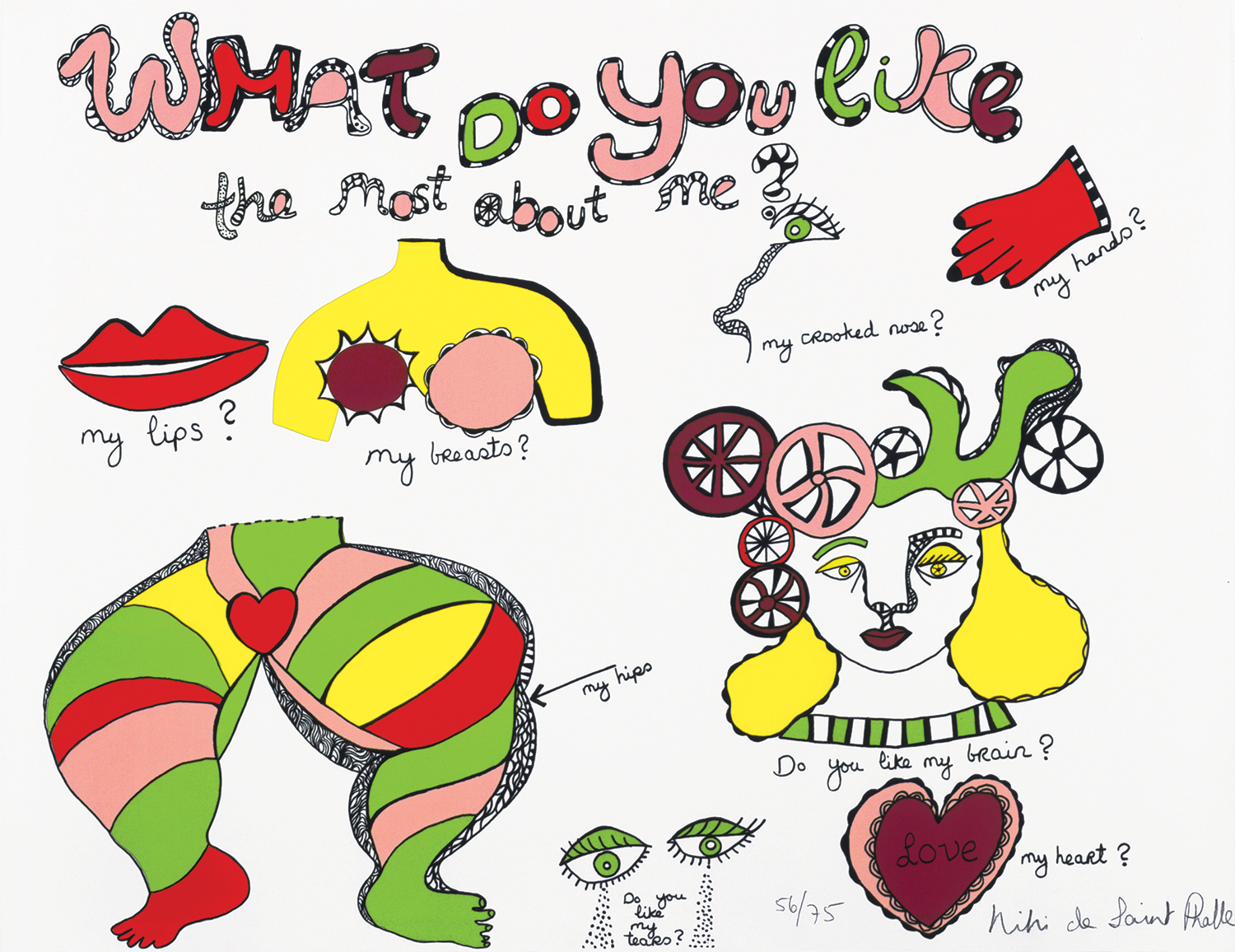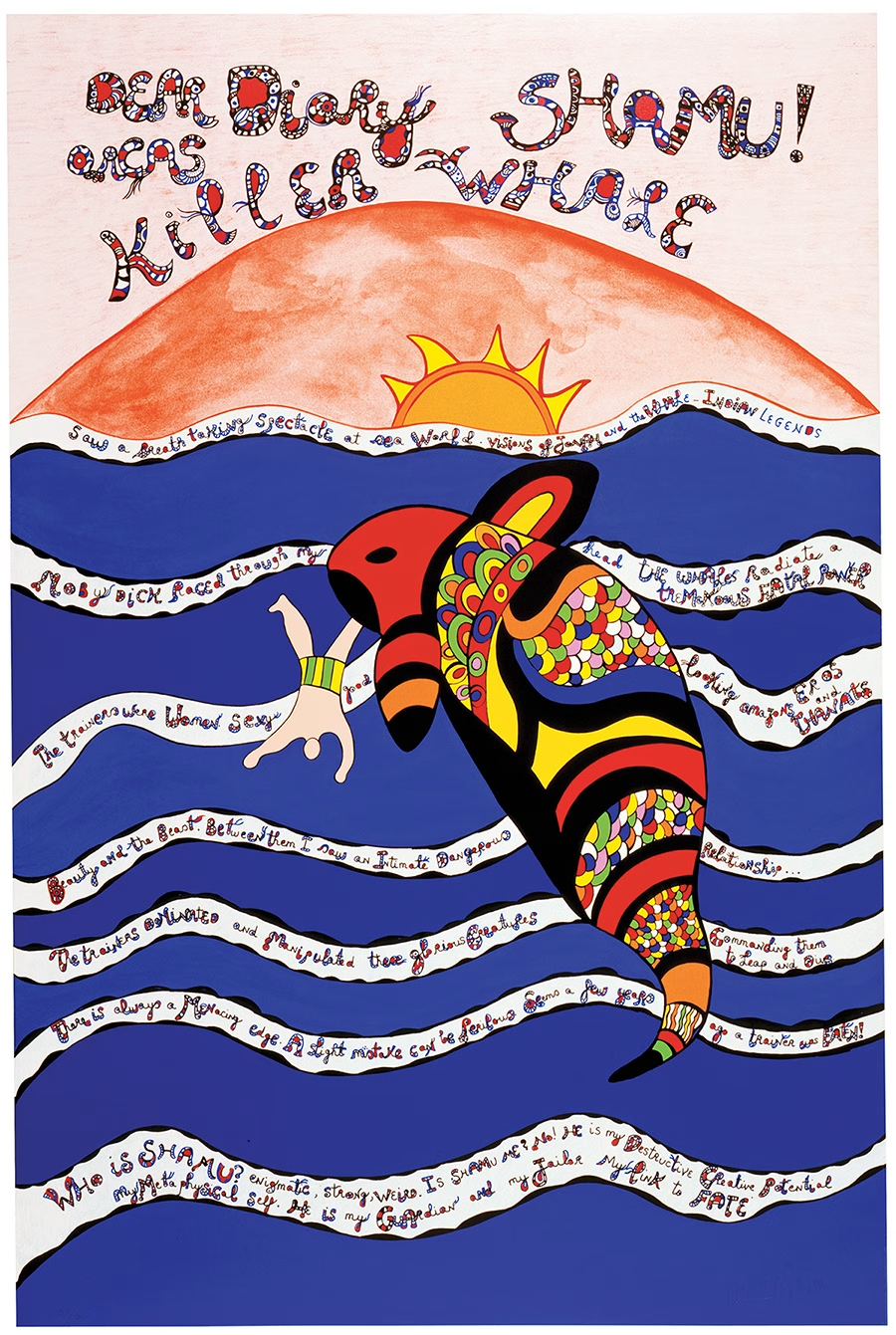Known for her daring energy as a sculptor and performance artist, Niki de Saint Phalle (b. 1930, Neuilly-sur-Seine, France; d. 2002, San Diego) also pursued a vigorous printmaking practice. She designed posters to promote her projects beginning early in her career, and she intuitively expanded on this graphic work to include prints, books, films, jewelry, and her own perfume. Developing her fragrance and an array of multiples made her art accessible to a wider audience, and the proceeds also helped finance Tarot Garden (1974–98), Saint Phalle’s most extensive architectural project, which she built in the hills of Tuscany.
Saint Phalle conceptualized Tarot Garden as “my own Garden of Joy. A little corner of Paradise. A meeting place between man and nature.” She and her team designed and constructed the park, which features monumental sculptural depictions of the 22 Major Arcana, the named cards in a tarot deck. NMWA’s exhibition features a range of prints that relate to the garden’s exuberant structures.

From Life
As a child and as a young self-taught artist, Saint Phalle experienced mistreatment and repression. She subsequently forged installations, sculptures, and performances that emphasize direct action and fearlessness. Her voluptuous female figures, called Nanas (“sassy young women” in French slang), subvert conventional ideals for women’s bodies and capabilities. These powerful figures are a cornerstone of the artist’s critique of patriarchal power.
In What Do You Like the Most About Me? (1970), Saint Phalle’s drawings of colorful lips, breasts, and hips, and eyes frame inscriptions such as, “Do you like my brain?” and “Do you like my tears?” These plaintive messages point to the range of emotions—both pleasant and painful—that define close human relationships.

To the Letter
Saint Phalle often reflected on her memories and observations through texts in the form of letters or journal entries. Many prints in this exhibition incorporate her free-flowing, unfiltered style of writing. Handwritten notes in both English and French curl around her drawings of figures, which she represented with her characteristic looping lines and bright colors.
On view are large silkscreens from a series that composes a visual diary of Saint Phalle’s life and work during her first year living in Southern California. Californian Diary (Shamu! Killer Whale) (1993), her depiction of an orca leaping above water, includes bands of text recounting the mammal’s fearsome power and innate ability to overcome its human trainer.

In 2001, shortly before her death, Saint Phalle created a series of prints centered on the socially conscious movements that she embraced. The exhibition also draws from this group of works, which assert the need for reproductive rights and a protected natural environment.
A Model Muse
NMWA developed this exhibition from an expansive gift of prints donated to the museum in 2023 by the Niki Charitable Art Foundation in honor of the building’s reopening after renovation. Saint Phalle established the foundation to share her work more broadly, and her renown now extends far beyond the fine arts sphere. Through Niki de Saint Phalle In Print, NMWA heralds this artist’s boundless and enduring inspirational force.
Niki de Saint Phalle In Print is on view at NMWA through November 30, 2025.